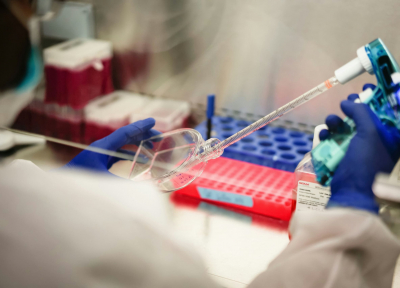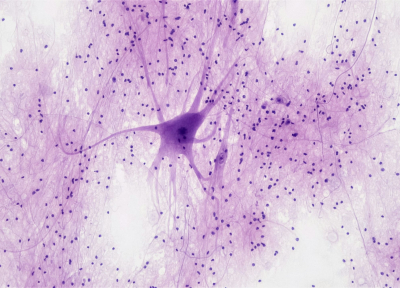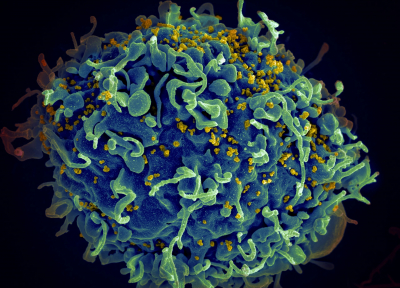The Tumor Microenvironment
Every tumor lives in a complex neighborhood of cells, structures, and signals known as the tumor microenvironment.
On This Page:
Overview
Cancer doesn’t grow in isolation. Every tumor lives in a complex neighborhood of cells, structures, and signals known as the tumor microenvironment—or TME for short.
Understanding the TME helps scientists see cancer not just as a disease of rogue cells, but as a breakdown in the way cells interact with their surroundings. The TME plays a critical role in how cancer grows, spreads, and resists treatment, and it has become a powerful target for new therapies.
Key Points
- The tumor microenvironment (TME) includes immune cells, blood vessels, and other surrounding tissues that interact with and influence tumor growth.
- Cancer can manipulate the TME to avoid immune attack, promote its own survival, and resist treatment.
- Targeting the TME through immunotherapies, anti-angiogenic drugs, and combination treatments is a growing focus in cancer research and therapy.
What Is the Tumor Microenvironment?
The tumor microenvironment is the area immediately around a tumor. It includes not just cancer cells, but also:
- Immune cells – like T cells, macrophages, and others.
- Blood vessels – which supply nutrients and oxygen.
- Fibroblasts – cells that produce the “scaffolding” of tissue.
- Signaling molecules – such as cytokines and growth factors.
- Structural support – including proteins and fibers that form the extracellular matrix.
Together, these parts shape how a tumor behaves and how the immune system responds.
The Immune System and the TME
The immune system is built to detect and destroy cancer cells. But within the TME, cancer can hijack the system and create a space that favors its survival. For example, some immune cells are blocked or silenced inside the TME, unable to attack the tumor. Other immune cells are tricked into helping the tumor grow, rather than fighting it. And blood vessels in the TME may be abnormal, making it hard for cancer-killing immune cells or drugs to reach the tumor.
When cancer hijacks this system, the TME can become a shielded zone where cancer hides and thrives. As cancer grows, it actively reshapes the TME to suit its needs. It can:
- Send out chemical signals that suppress the immune response.
- Attract “helper” cells, like certain types of macrophages, that support tumor growth.
- Build barriers that make it harder for drugs or immune cells to reach the tumor.
- Create low-oxygen (hypoxic) zones, which make the environment even more hostile to normal immune activity.
These changes make the TME not just a bystander, but a partner in cancer progression.
Why the TME Matters for Cancer Treatment
In the past, cancer treatments focused mostly on killing tumor cells directly. Now, researchers are looking at the whole environment around the tumor including the immune response, blood supply, and support structures.
Understanding the TME opens doors for new treatments that:
- Reprogram immune cells to overcome the tumor’s defenses. Treatments, such as checkpoint Inhibitors, aim to change how immune cells behave inside the TME, helping them fight cancer instead of being suppressed.
- Target blood vessels to cut off nutrients and improve drug delivery. Tumors often stimulate the growth of abnormal blood vessels to feed themselves. Cutting off that blood supply with drugs called anti-angiogenics can starve the tumor and improve how other treatments work.
- Disrupt the tumor’s communication with surrounding cells. Tumors use chemical signals to control surrounding cells and create a pro-cancer environment. Therapies, such as cytokine blockers, are being developed to block these messages.
- Combine immunotherapy with TME-targeting drugs to improve outcomes. Some of the most promising approaches involve using multiple therapies together – one to weaken the TME, another to boost the immune response.
By targeting not just the cancer cells, but also the supportive environment they create, researchers are developing smarter, more adaptable treatment strategies.
Sources
- Jain, A., Marshall, J., Buikema, A., Bancroft, T., Kelly, J. P., & Newschaffer, C. J. (2015). Autism Occurrence by MMR Vaccine Status Among US Children With Older Siblings With and Without Autism. JAMA, 313(15), 1534. https://doi.org/10.1001/jama.2015.3077
- Taylor, B., Miller, E., Farrington, Cp., Petropoulos, M.-C., Favot-Mayaud, I., Li, J., & Waight, P. A. (1999). Autism and measles, mumps, and rubella vaccine: no epidemiological evidence for a causal association. The Lancet, 353(9169), 2026–2029. https://doi.org/10.1016/s0140-6736(99)01239-8
- Madsen, K. M., Hviid, A., Vestergaard, M., Schendel, D., Wohlfahrt, J., Thorsen, P., Olsen, J., & Melbye, M. (2002). A Population-Based Study of Measles, Mumps, and Rubella Vaccination and Autism. New England Journal of Medicine, 347(19), 1477–1482. https://doi.org/10.1056/nejmoa021134
Related Topics
Downloads
External Resources
Latest News


